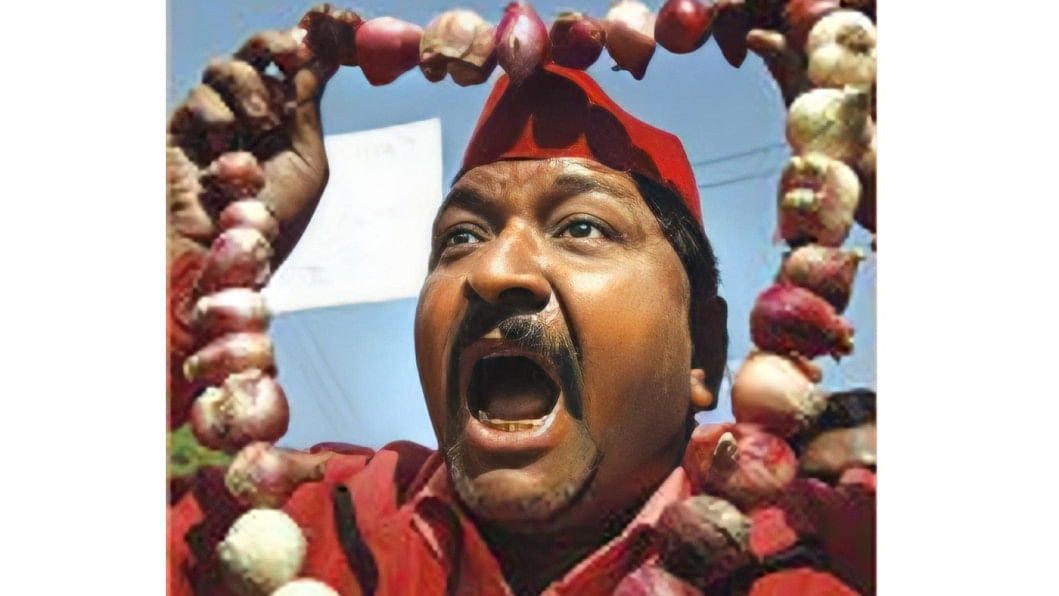Asia to face food crisis

India has made several attempts to temper the inflation -- scrapping import taxes for onions, banning their export and ordering low-priced sales at government-run shops. But there was no quick fix
Not too many good things have happened in Asia in the last few months. The region has suffered natural calamities, with the most devastating floods appearing before South Asia. None of Asian countries are self-sufficient in all commodities.
The floods hurt even countries that enjoy a comparatively better position, in case of food security. Floods have washed over many South Asian countries, including Sri Lanka, India, Pakistan and Nepal, resulting in food inflation.
Bangladesh, one of the poorest countries in the world, depends on others for most of its food items. It is hardly possible to find a commodity that Bangladesh does not import.
Inflation in Bangladesh has been steadily rising in fiscal 2009-10, Bangladesh Bank said it in its annual report for the year.
"The declining trend in average inflation that started from October 2008 ended in October 2009 and then began to rise in November 2009."
Inflation in Bangladesh is largely driven by food prices. The annual average and point-to-point food inflation depicted mainly upward trends in fiscal 2010.
The annual average food inflation surged to 7.54 percent in November 2010, up from 5.1 percent in October 2009 against 7.2 percent in fiscal 2009.
Food prices in international markets have been soaring mainly because of a crop failure in Australia, following an invasion of locusts and a wet summer in Canada. Wheat prices already reached a two-year high, acting on a ban on grain exports due to drought in Russia and rotting stocks of grains in India.
The UN Food and Agriculture Organisation said in a report early this month that sugar and meat prices were at their highest levels since its records began in 1990. For wheat, rice, corn and other cereals, prices were at their highest since the 2008 crisis.
The South Asian countries, particularly the Saarc countries, depicted higher inflation in fiscal 2009-10. Among those countries, India, Nepal and Pakistan showed double digit inflation. India topped the list with 18.3 percent inflation in December 2010 and Malaysia was the lowest with 1.7 percent inflation in June 2010.
Many steps have been taken by the countries as well as many international organisations to ease the situation. G20, a forum of the finance ministers and central bank governors of 19 countries for international economic development, is working to find ways to bring down soaring food prices.
Rhee Chang-yong, who represents South Korea at the G20, said working-group talks were under way, aimed at improving global cooperation to resolve food security problems.
India has made some attempts to temper the rise in the past month -- scrapping import taxes for onions, banning their export and ordering low-priced sales at government-run shops. But there was no quick fix.
The situation is now settling down as Indian food inflation eased for the second straight week in January, tracking lower fruit and vegetable prices. Analysts expect food prices to moderate by February, but they would still remain high.
The onion crisis that has been continuing in Bangladesh, India along with Pakistan is nearly over, and its price is expected to calm down significantly in the coming days.
"A substantial quantity of onion has been damaged because of the heavy rains in the Nashik area. Our expectation is that with the arrival of stocks from Uttar Pradesh, Gujarat and Madhya Pradesh in the next 2-3 weeks, prices will come down," said Indian Agriculture Minister Sharad Pawar last month.
Onion prices in various agriculture produce market committees (APMC) in Nashik, the main trading centre for the bulb, have soared to a high of Rs 7,100 per quintal, resulting a huge hike in Bangladesh's onion price.
The price here went up to around Tk 70 a kilogram due to an export ban by the Indian agriculture ministry on December 20, 2010, after the floods. The situation is improving by the day.
Seventy-eight trucks loaded with a huge consignment of onions reached the APMC market in Jamalpur on January 18, bringing the wholesale rate of onions down to Rs 30 a kilogram that will certainly encourage India to withdraw the export ban on Bangladesh and help cool prices.
"After the untimely winter rains ruined our crops and bad reports started flowing in from the market, farmers from the Saurashtra region started working hard on the next harvest scheduled in January," said a wholesaler of APMC market, Jamalpur.
India has not yet withdrawn the export ban on onions, said Narayan Chandra Saha, an importer at Shyambazar in Old Dhaka.
"We are hoping that from February 1 there will be no such ban." "But there is a problem. NAFED -- the regulatory agency for onion exports -- has not yet lowered the minimum export price of onions from $1250 per tonne that was fixed with the export ban. Naturally it remains at $250 in this period of time."
But he hoped that prices would come down in two to three months, when a large quantity comes from Meherpur in Bangladesh, the biggest produce of the commodity this season.

 For all latest news, follow The Daily Star's Google News channel.
For all latest news, follow The Daily Star's Google News channel. 



Comments